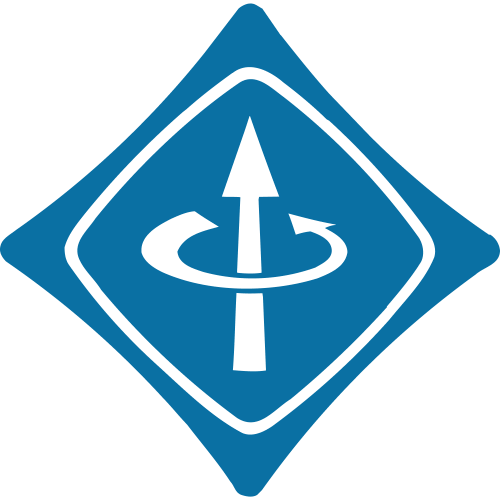Nano Energy, volume 44, pages 327-335
Insights on the Na+ ion storage mechanism in hard carbon: Discrimination between the porosity, surface functional groups and defects
Camelia Matei Ghimbeu
1, 2
,
Joanna Górka
3
,
Virgine Simone
4
,
Loïc Simonin
4
,
Sébastien Martinet
4
,
Cathie Vix-Guterl
1, 2
1
Réseau sur le Stockage Electrochimique de l'énergie (RS2E), FR CNRS 3459, 33 Rue Saint Leu, 80039 Amiens Cedex, France
|
Publication type: Journal Article
Publication date: 2018-02-01
General Materials Science
Electrical and Electronic Engineering
Renewable Energy, Sustainability and the Environment
Abstract
Sodium ion batteries (SIBs) using hard carbon as negative electrode hold the promise of being low cost alternative to lithium ion batteries (LiBs). However, the Na+ storage mechanism in hard carbons is not fully understood yet and the attribution of Na storage in the sloping and plateau regions of the sodiation/desodiation curves remains still controversial. The current work employs N2, Kr and CO2 gases to correctly assess the changes in hard carbon porosity induced by different pyrolysis temperature of cellulose. The sloping capacity was found to decrease with the decrease of the specific area of ultramicropores measurable only by CO2 adsorption, while the plateau capacity demonstrated an opposite behavior. The high temperature derived carbons (> 1400 °C) present no porosity which disqualifies the attribution of plateau region to the adsorption of Na+ in the nanopores but rather the insertion between the pseudo-graphitic domains. Temperature programmed desorption coupled with mass spectrometry (TPD-MS) was performed to determine the nature and the quantity of oxygen surface functional groups followed by oxygen chemisorptions to assess the amount of carbon edge defects expressed by active surface area (ASA) values. A decrease in the amount of oxygen groups and active surface area with the increase of the pyrolysis temperature was observed which is accompanied by a decrease of the sloping capacity. These results shed light in the storage mechanisms, the sloping region being ascribed mainly to the interaction of Na+ with carbon edge defects and adsorption in the microporosity while the plateau region assigned to the intercalation of Na+ in the pseudo-graphitic nanodomains.
Top-30
Citations by journals
|
2
4
6
8
10
12
14
16
18
|
|
|
Journal of Materials Chemistry A
18 publications, 7.23%
|
|
|
Carbon
17 publications, 6.83%
|
|
|
Advanced Energy Materials
15 publications, 6.02%
|
|
|
Energy Storage Materials
11 publications, 4.42%
|
|
|
ACS Applied Energy Materials
10 publications, 4.02%
|
|
|
Journal of the Electrochemical Society
10 publications, 4.02%
|
|
|
Journal of Power Sources
7 publications, 2.81%
|
|
|
Small
7 publications, 2.81%
|
|
|
Advanced Functional Materials
7 publications, 2.81%
|
|
|
ACS Sustainable Chemistry and Engineering
6 publications, 2.41%
|
|
|
Electrochimica Acta
6 publications, 2.41%
|
|
|
ChemElectroChem
5 publications, 2.01%
|
|
|
Applied Surface Science
5 publications, 2.01%
|
|
|
Nano Energy
5 publications, 2.01%
|
|
|
Journal of Colloid and Interface Science
4 publications, 1.61%
|
|
|
Diamond and Related Materials
4 publications, 1.61%
|
|
|
Advanced Materials
4 publications, 1.61%
|
|
|
Journal of Energy Storage
4 publications, 1.61%
|
|
|
Chemistry of Materials
3 publications, 1.2%
|
|
|
Journal of Energy Chemistry
3 publications, 1.2%
|
|
|
Journal of Electroanalytical Chemistry
3 publications, 1.2%
|
|
|
ChemSusChem
3 publications, 1.2%
|
|
|
ACS applied materials & interfaces
3 publications, 1.2%
|
|
|
Energy and Environmental Science
3 publications, 1.2%
|
|
|
Chinese Chemical Letters
2 publications, 0.8%
|
|
|
Nanomaterials
2 publications, 0.8%
|
|
|
Journal of Materials Science: Materials in Electronics
2 publications, 0.8%
|
|
|
Nano-Micro Letters
2 publications, 0.8%
|
|
|
Chemical Engineering Journal
2 publications, 0.8%
|
|
|
2
4
6
8
10
12
14
16
18
|
Citations by publishers
|
10
20
30
40
50
60
70
80
90
100
|
|
|
Elsevier
94 publications, 37.75%
|
|
|
Wiley
57 publications, 22.89%
|
|
|
American Chemical Society (ACS)
30 publications, 12.05%
|
|
|
Royal Society of Chemistry (RSC)
28 publications, 11.24%
|
|
|
Springer Nature
12 publications, 4.82%
|
|
|
The Electrochemical Society
10 publications, 4.02%
|
|
|
Multidisciplinary Digital Publishing Institute (MDPI)
6 publications, 2.41%
|
|
|
Beilstein-Institut
1 publication, 0.4%
|
|
|
Nonferrous Metals Society of China
1 publication, 0.4%
|
|
|
KeAi Communications Co.
1 publication, 0.4%
|
|
|
Johnson Matthey Public Limited Company
1 publication, 0.4%
|
|
|
Autonomous Non-profit Organization Editorial Board of the journal Uspekhi Khimii
1 publication, 0.4%
|
|
|
IEEE
1 publication, 0.4%
|
|
|
American Institute of Physics (AIP)
1 publication, 0.4%
|
|
|
10
20
30
40
50
60
70
80
90
100
|
- We do not take into account publications without a DOI.
- Statistics recalculated only for publications connected to researchers, organizations and labs registered on the platform.
- Statistics recalculated weekly.
{"yearsCitations":{"type":"bar","data":{"show":true,"labels":[2018,2019,2020,2021,2022,2023,2024],"ids":[0,0,0,0,0,0,0],"codes":[0,0,0,0,0,0,0],"imageUrls":["","","","","","",""],"datasets":[{"label":"Citations number","data":[13,39,31,48,45,32,41],"backgroundColor":["#3B82F6","#3B82F6","#3B82F6","#3B82F6","#3B82F6","#3B82F6","#3B82F6"],"percentage":["5.22","15.66","12.45","19.28","18.07","12.85","16.47"],"barThickness":null}]},"options":{"indexAxis":"x","maintainAspectRatio":true,"scales":{"y":{"ticks":{"precision":0,"autoSkip":false,"font":{"family":"Montserrat"},"color":"#000000"},"stacked":false},"x":{"ticks":{"stepSize":1,"precision":0,"font":{"family":"Montserrat"},"color":"#000000"},"stacked":false}},"plugins":{"legend":{"position":"top","labels":{"font":{"family":"Montserrat"},"color":"#000000"}},"title":{"display":true,"text":"Citations per year","font":{"size":24,"family":"Montserrat","weight":600},"color":"#000000"}}}},"journals":{"type":"bar","data":{"show":true,"labels":["Journal of Materials Chemistry A","Carbon","Advanced Energy Materials","Energy Storage Materials","ACS Applied Energy Materials","Journal of the Electrochemical Society","Journal of Power Sources","Small","Advanced Functional Materials","ACS Sustainable Chemistry and Engineering","Electrochimica Acta","ChemElectroChem","Applied Surface Science","Nano Energy","Journal of Colloid and Interface Science","Diamond and Related Materials","Advanced Materials","Journal of Energy Storage","Chemistry of Materials","Journal of Energy Chemistry","Journal of Electroanalytical Chemistry","ChemSusChem","ACS applied materials & interfaces","Energy and Environmental Science","Chinese Chemical Letters","Nanomaterials","Journal of Materials Science: Materials in Electronics","Nano-Micro Letters","Chemical Engineering Journal"],"ids":[14919,37,22475,3858,6419,5297,14844,9872,7715,18886,15613,22483,12539,23236,24202,14497,25159,18623,6428,20653,22454,6896,1458,10138,20341,10051,20208,7765,16275],"codes":[0,0,0,0,0,0,0,0,0,0,0,0,0,0,0,0,0,0,0,0,0,0,0,0,0,0,0,0,0],"imageUrls":["\/storage\/images\/resized\/leiAYcRDGTSl5B1eCnwpSGqmDEUEfDPPoYisFGhT_medium.webp","\/storage\/images\/resized\/GDnYOu1UpMMfMMRV6Aqle4H0YLLsraeD9IP9qScG_medium.webp","\/storage\/images\/resized\/bRyGpdm98BkAUYiK1YFNpl5Z7hPu6Gd87gbIeuG3_medium.webp","\/storage\/images\/resized\/GDnYOu1UpMMfMMRV6Aqle4H0YLLsraeD9IP9qScG_medium.webp","\/storage\/images\/resized\/iLiQsFqFaSEx6chlGQ5fbAwF6VYU3WWa08hkss0g_medium.webp","\/storage\/images\/resized\/s6nfxitVCZUsdJiJZESaAXqdmMJxom8q4Ps6ayL2_medium.webp","\/storage\/images\/resized\/GDnYOu1UpMMfMMRV6Aqle4H0YLLsraeD9IP9qScG_medium.webp","\/storage\/images\/resized\/bRyGpdm98BkAUYiK1YFNpl5Z7hPu6Gd87gbIeuG3_medium.webp","\/storage\/images\/resized\/bRyGpdm98BkAUYiK1YFNpl5Z7hPu6Gd87gbIeuG3_medium.webp","\/storage\/images\/resized\/iLiQsFqFaSEx6chlGQ5fbAwF6VYU3WWa08hkss0g_medium.webp","\/storage\/images\/resized\/GDnYOu1UpMMfMMRV6Aqle4H0YLLsraeD9IP9qScG_medium.webp","\/storage\/images\/resized\/bRyGpdm98BkAUYiK1YFNpl5Z7hPu6Gd87gbIeuG3_medium.webp","\/storage\/images\/resized\/GDnYOu1UpMMfMMRV6Aqle4H0YLLsraeD9IP9qScG_medium.webp","\/storage\/images\/resized\/GDnYOu1UpMMfMMRV6Aqle4H0YLLsraeD9IP9qScG_medium.webp","\/storage\/images\/resized\/GDnYOu1UpMMfMMRV6Aqle4H0YLLsraeD9IP9qScG_medium.webp","\/storage\/images\/resized\/GDnYOu1UpMMfMMRV6Aqle4H0YLLsraeD9IP9qScG_medium.webp","\/storage\/images\/resized\/bRyGpdm98BkAUYiK1YFNpl5Z7hPu6Gd87gbIeuG3_medium.webp","\/storage\/images\/resized\/GDnYOu1UpMMfMMRV6Aqle4H0YLLsraeD9IP9qScG_medium.webp","\/storage\/images\/resized\/iLiQsFqFaSEx6chlGQ5fbAwF6VYU3WWa08hkss0g_medium.webp","\/storage\/images\/resized\/GDnYOu1UpMMfMMRV6Aqle4H0YLLsraeD9IP9qScG_medium.webp","\/storage\/images\/resized\/GDnYOu1UpMMfMMRV6Aqle4H0YLLsraeD9IP9qScG_medium.webp","\/storage\/images\/resized\/bRyGpdm98BkAUYiK1YFNpl5Z7hPu6Gd87gbIeuG3_medium.webp","\/storage\/images\/resized\/iLiQsFqFaSEx6chlGQ5fbAwF6VYU3WWa08hkss0g_medium.webp","\/storage\/images\/resized\/leiAYcRDGTSl5B1eCnwpSGqmDEUEfDPPoYisFGhT_medium.webp","\/storage\/images\/resized\/GDnYOu1UpMMfMMRV6Aqle4H0YLLsraeD9IP9qScG_medium.webp","\/storage\/images\/resized\/MjH1ITP7lMYGxeqUZfkt2BnVLgjkk413jwBV97XX_medium.webp","\/storage\/images\/resized\/voXLqlsvTwv5p3iMQ8Dhs95nqB4AXOG7Taj7G4ra_medium.webp","\/storage\/images\/resized\/voXLqlsvTwv5p3iMQ8Dhs95nqB4AXOG7Taj7G4ra_medium.webp","\/storage\/images\/resized\/GDnYOu1UpMMfMMRV6Aqle4H0YLLsraeD9IP9qScG_medium.webp"],"datasets":[{"label":"","data":[18,17,15,11,10,10,7,7,7,6,6,5,5,5,4,4,4,4,3,3,3,3,3,3,2,2,2,2,2],"backgroundColor":["#3B82F6","#3B82F6","#3B82F6","#3B82F6","#3B82F6","#3B82F6","#3B82F6","#3B82F6","#3B82F6","#3B82F6","#3B82F6","#3B82F6","#3B82F6","#3B82F6","#3B82F6","#3B82F6","#3B82F6","#3B82F6","#3B82F6","#3B82F6","#3B82F6","#3B82F6","#3B82F6","#3B82F6","#3B82F6","#3B82F6","#3B82F6","#3B82F6","#3B82F6"],"percentage":[7.23,6.83,6.02,4.42,4.02,4.02,2.81,2.81,2.81,2.41,2.41,2.01,2.01,2.01,1.61,1.61,1.61,1.61,1.2,1.2,1.2,1.2,1.2,1.2,0.8,0.8,0.8,0.8,0.8],"barThickness":13}]},"options":{"indexAxis":"y","maintainAspectRatio":false,"scales":{"y":{"ticks":{"precision":0,"autoSkip":false,"font":{"family":"Montserrat"},"color":"#000000"},"stacked":false},"x":{"ticks":{"stepSize":null,"precision":0,"font":{"family":"Montserrat"},"color":"#000000"},"stacked":false}},"plugins":{"legend":{"position":"top","labels":{"font":{"family":"Montserrat"},"color":"#000000"}},"title":{"display":true,"text":"Journals","font":{"size":24,"family":"Montserrat","weight":600},"color":"#000000"}}}},"publishers":{"type":"bar","data":{"show":true,"labels":["Elsevier","Wiley","American Chemical Society (ACS)","Royal Society of Chemistry (RSC)","Springer Nature","The Electrochemical Society","Multidisciplinary Digital Publishing Institute (MDPI)","Beilstein-Institut","Nonferrous Metals Society of China","KeAi Communications Co.","Johnson Matthey Public Limited Company","Autonomous Non-profit Organization Editorial Board of the journal Uspekhi Khimii","IEEE","American Institute of Physics (AIP)"],"ids":[17,11,40,123,8,6916,202,6139,1585,326,6794,9422,6953,250],"codes":[0,0,0,0,0,0,0,0,0,0,0,0,0,0],"imageUrls":["\/storage\/images\/resized\/GDnYOu1UpMMfMMRV6Aqle4H0YLLsraeD9IP9qScG_medium.webp","\/storage\/images\/resized\/bRyGpdm98BkAUYiK1YFNpl5Z7hPu6Gd87gbIeuG3_medium.webp","\/storage\/images\/resized\/iLiQsFqFaSEx6chlGQ5fbAwF6VYU3WWa08hkss0g_medium.webp","\/storage\/images\/resized\/leiAYcRDGTSl5B1eCnwpSGqmDEUEfDPPoYisFGhT_medium.webp","\/storage\/images\/resized\/voXLqlsvTwv5p3iMQ8Dhs95nqB4AXOG7Taj7G4ra_medium.webp","\/storage\/images\/resized\/s6nfxitVCZUsdJiJZESaAXqdmMJxom8q4Ps6ayL2_medium.webp","\/storage\/images\/resized\/MjH1ITP7lMYGxeqUZfkt2BnVLgjkk413jwBV97XX_medium.webp","\/storage\/images\/resized\/ex6KJoZujZOZFZh7jGfeHauiftuB3CI7iwJVFRDg_medium.webp","","\/storage\/images\/resized\/jeWDR7NTA9Ab5MVz8Uqjl2RPCndzFjSyl0FaRAHg_medium.webp","","\/storage\/images\/resized\/9Mus3KG1Tkd7Bwaurt8H3RwWh0CxRlGoO6ng9UK1_medium.webp","\/storage\/images\/resized\/6scCJegesojp2jubwY3uKCzTAmgsaH2GIFlg6Hfk_medium.webp","\/storage\/images\/resized\/ARM4e6URKRsbRZvIF0vFis9DjxGloBjnBYJXbHmZ_medium.webp"],"datasets":[{"label":"","data":[94,57,30,28,12,10,6,1,1,1,1,1,1,1],"backgroundColor":["#3B82F6","#3B82F6","#3B82F6","#3B82F6","#3B82F6","#3B82F6","#3B82F6","#3B82F6","#3B82F6","#3B82F6","#3B82F6","#3B82F6","#3B82F6","#3B82F6"],"percentage":[37.75,22.89,12.05,11.24,4.82,4.02,2.41,0.4,0.4,0.4,0.4,0.4,0.4,0.4],"barThickness":13}]},"options":{"indexAxis":"y","maintainAspectRatio":false,"scales":{"y":{"ticks":{"precision":0,"autoSkip":false,"font":{"family":"Montserrat"},"color":"#000000"},"stacked":false},"x":{"ticks":{"stepSize":null,"precision":0,"font":{"family":"Montserrat"},"color":"#000000"},"stacked":false}},"plugins":{"legend":{"position":"top","labels":{"font":{"family":"Montserrat"},"color":"#000000"}},"title":{"display":true,"text":"Publishers","font":{"size":24,"family":"Montserrat","weight":600},"color":"#000000"}}}},"yearsCitationsQuartiles":{"type":"bar","data":{"show":true,"labels":[2018,2019,2020,2021,2022,2023,2024],"ids":[],"codes":[],"imageUrls":[],"datasets":[{"label":"Q4","backgroundColor":"rgb(221,90,78)","data":[0,0,0,0,0,0,0],"percentage":["0","0","0","0","0","0","0"]},{"label":"Q3","backgroundColor":"rgb(251, 163,83)","data":[0,0,0,0,0,0,0],"percentage":["0","0","0","0","0","0","0"]},{"label":"Q2","backgroundColor":"rgb(232, 213, 89)","data":[1,3,1,3,5,4,7],"percentage":["0.4","1.2","0.4","1.2","2.01","1.61","2.81"]},{"label":"Q1","backgroundColor":"rgb(164, 207, 99)","data":[11,34,30,42,33,26,31],"percentage":["4.42","13.65","12.05","16.87","13.25","10.44","12.45"]},{"label":"Quartile not defined","backgroundColor":"#E5E7EB","data":[1,2,0,3,7,2,3],"percentage":["0.4","0.8","0","1.2","2.81","0.8","1.2"]}]},"options":{"indexAxis":"x","maintainAspectRatio":true,"scales":{"y":{"ticks":{"precision":0,"autoSkip":false,"font":{"family":"Montserrat"},"color":"#000000"},"stacked":true},"x":{"ticks":{"stepSize":1,"precision":0,"font":{"family":"Montserrat"},"color":"#000000"},"stacked":true}},"plugins":{"legend":{"position":"top","labels":{"font":{"family":"Montserrat"},"color":"#000000"}},"title":{"display":true,"text":"Citations quartiles by SCImago per year","font":{"size":24,"family":"Montserrat","weight":600},"color":"#000000"}}}},"yearsCitationsQuartilesWs":{"type":"bar","data":{"show":true,"labels":[2018,2019,2020,2021,2022,2023,2024],"ids":[],"codes":[],"imageUrls":[],"datasets":[{"label":"Q4","backgroundColor":"rgb(221,90,78)","data":[0,0,0,0,0,0,0],"percentage":["0","0","0","0","0","0","0"]},{"label":"Q3","backgroundColor":"rgb(251, 163,83)","data":[0,3,1,1,1,0,0],"percentage":["0","1.2","0.4","0.4","0.4","0","0"]},{"label":"Q2","backgroundColor":"rgb(232, 213, 89)","data":[4,6,2,8,7,10,8],"percentage":["1.61","2.41","0.8","3.21","2.81","4.02","3.21"]},{"label":"Q1","backgroundColor":"rgb(164, 207, 99)","data":[8,28,28,35,29,20,29],"percentage":["3.21","11.24","11.24","14.06","11.65","8.03","11.65"]},{"label":"Quartile not defined","backgroundColor":"#E5E7EB","data":[1,2,0,4,8,2,4],"percentage":["0.4","0.8","0","1.61","3.21","0.8","1.61"]}]},"options":{"indexAxis":"x","maintainAspectRatio":true,"scales":{"y":{"ticks":{"precision":0,"autoSkip":false,"font":{"family":"Montserrat"},"color":"#000000"},"stacked":true},"x":{"ticks":{"stepSize":1,"precision":0,"font":{"family":"Montserrat"},"color":"#000000"},"stacked":true}},"plugins":{"legend":{"position":"top","labels":{"font":{"family":"Montserrat"},"color":"#000000"}},"title":{"display":true,"text":"Citations quartiles by WoS per year","font":{"size":24,"family":"Montserrat","weight":600},"color":"#000000"}}}}}
Are you a researcher?
Create a profile to get free access to personal recommendations for colleagues and new articles.
Metrics
Cite this
GOST |
RIS |
BibTex
Cite this
GOST
Copy
Ghimbeu C. M. et al. Insights on the Na+ ion storage mechanism in hard carbon: Discrimination between the porosity, surface functional groups and defects // Nano Energy. 2018. Vol. 44. pp. 327-335.
GOST all authors (up to 50)
Copy
Ghimbeu C. M., Górka J., Simone V., Simonin L., Martinet S., Vix-Guterl C. Insights on the Na+ ion storage mechanism in hard carbon: Discrimination between the porosity, surface functional groups and defects // Nano Energy. 2018. Vol. 44. pp. 327-335.
Cite this
RIS
Copy
TY - JOUR
DO - 10.1016/j.nanoen.2017.12.013
UR - https://doi.org/10.1016/j.nanoen.2017.12.013
TI - Insights on the Na+ ion storage mechanism in hard carbon: Discrimination between the porosity, surface functional groups and defects
T2 - Nano Energy
AU - Ghimbeu, Camelia Matei
AU - Górka, Joanna
AU - Simone, Virgine
AU - Simonin, Loïc
AU - Martinet, Sébastien
AU - Vix-Guterl, Cathie
PY - 2018
DA - 2018/02/01 00:00:00
PB - Elsevier
SP - 327-335
VL - 44
SN - 2211-2855
ER -
Cite this
BibTex
Copy
@article{2018_Ghimbeu,
author = {Camelia Matei Ghimbeu and Joanna Górka and Virgine Simone and Loïc Simonin and Sébastien Martinet and Cathie Vix-Guterl},
title = {Insights on the Na+ ion storage mechanism in hard carbon: Discrimination between the porosity, surface functional groups and defects},
journal = {Nano Energy},
year = {2018},
volume = {44},
publisher = {Elsevier},
month = {feb},
url = {https://doi.org/10.1016/j.nanoen.2017.12.013},
pages = {327--335},
doi = {10.1016/j.nanoen.2017.12.013}
}












